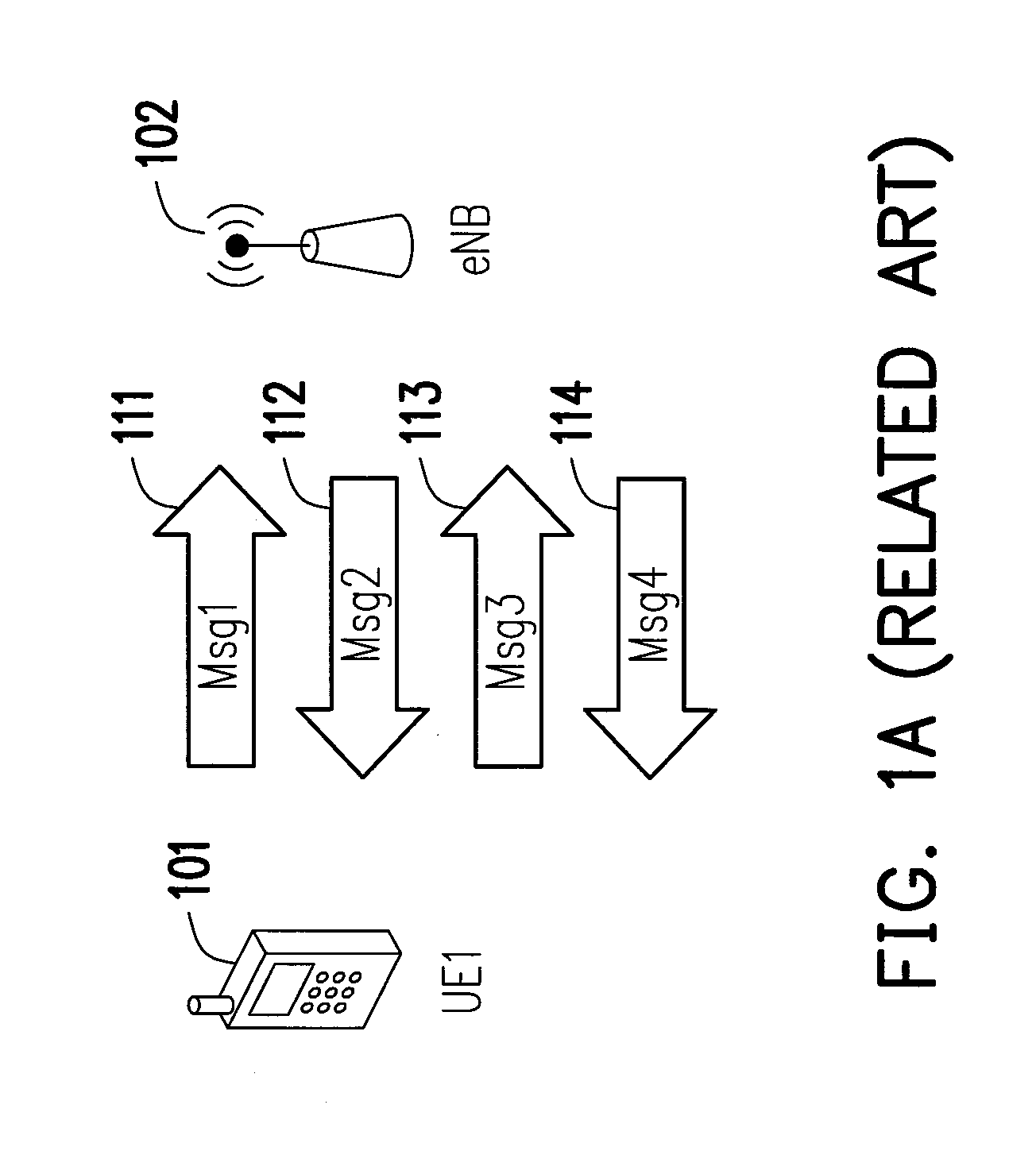Method and apparatus for device to device communication
a communication method and device technology, applied in the field of device to device communication, can solve the problems of network-based solution unreliable, d2d communication at this point in time not being feasible in a lte communication system, and d2d communication in lte systems also encountering difficulties related to proximity detection
- Summary
- Abstract
- Description
- Claims
- Application Information
AI Technical Summary
Benefits of technology
Problems solved by technology
Method used
Image
Examples
Embodiment Construction
[0041]In this disclosure, 3GPP-like keywords or phrases are used merely as examples to present inventive concepts in accordance with the present disclosure; however, the same concept presented in the disclosure can be applied to any other systems such as IEEE 802.11, IEEE 802.16, WiMAX, and so like by persons of ordinarily skilled in the art.
[0042]A control node in this disclosure would be referred to as a base station (BS) or an eNB. It should be noted that the references of such are merely exemplary and therefore do not serve as limitations to the type of control nodes as it would be apparent to those skilled in the art that other types of control node could be selected to achieve network control purposes such as an advanced base station (ABS), a base transceiver system (BTS), an access point, a home base station, a relay station, a scatterer, a repeater, an intermediate node, an intermediary, and / or satellite-based communication base stations.
[0043]The control node may also be re...
PUM
 Login to View More
Login to View More Abstract
Description
Claims
Application Information
 Login to View More
Login to View More - R&D
- Intellectual Property
- Life Sciences
- Materials
- Tech Scout
- Unparalleled Data Quality
- Higher Quality Content
- 60% Fewer Hallucinations
Browse by: Latest US Patents, China's latest patents, Technical Efficacy Thesaurus, Application Domain, Technology Topic, Popular Technical Reports.
© 2025 PatSnap. All rights reserved.Legal|Privacy policy|Modern Slavery Act Transparency Statement|Sitemap|About US| Contact US: help@patsnap.com



